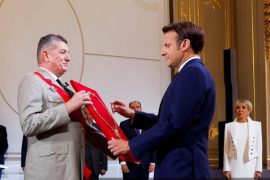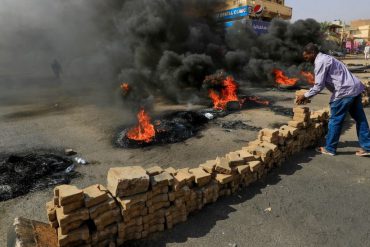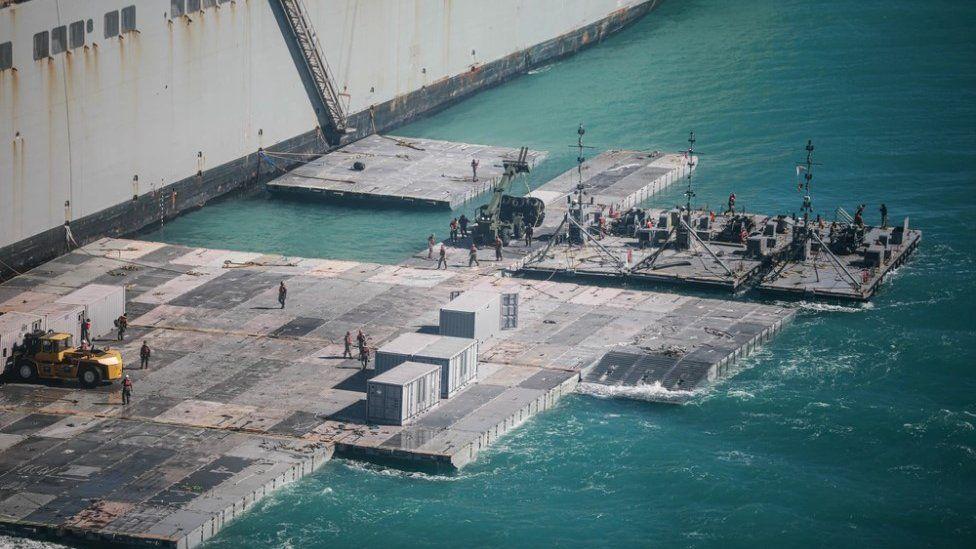
One US plan to deliver aid to Gaza from one floating pier for sea go dey full wit security challenges, especially hostile fire and crowds of desperate civilians for di shore.
More dan 1,000 US troops dey expected to participate for di operation although di Pentagon tok say no “boots go dey for ground”.
To help achieve dat, di US don partner wit one little-known private firm, Fogbow, wey former military and intelligence officials dey run.
Di goal na to deliver two million meals per day to Gaza, wia di United Nations don warn say famine dey “almost inevitable”.
Dis na wetin we know about dis ogbonge logistical exercise.
How di US go set up di pier?
According to di Pentagon, di plan include two main components wey dem need to assemble – one big floating dock wey dem make wit steel segments and one two-lane,1,800ft (548m) causeway and pier.
Di causeway go be of interconnected, 40ft (12m) steel pieces wey link togeda and attach to di shore.
Cargo ships go deliver supplies to di dock and di aid go dey offloaded onto one range of barges and smaller vessels – wey dey known as logistics support vessels, or LSVs – and carri am to di pier.
From dia, vehicles go drive di supplies onto land and into Gaza.
Di causeway go dey assembled for sea and “driven” into di beach, wey go allow US forces to avoid setting foot for Gaza. Di US dey support im ally Israel and don name Hamas as terrorist organisation.
Dis one wey relate to building project – officially dey known as Joint Logistics Over-di-Shore, or JLOTS – na one wey di US military don use before for Kuwait, Somalia, Haiti and Central America for disaster relief missions.
Earlier versions dey used as far back as World War II following di invasion of Normandy on D-Day. As recent as July last year, di defence department bin use similar JLOTS equipment during one large-scale exercise for Australia.
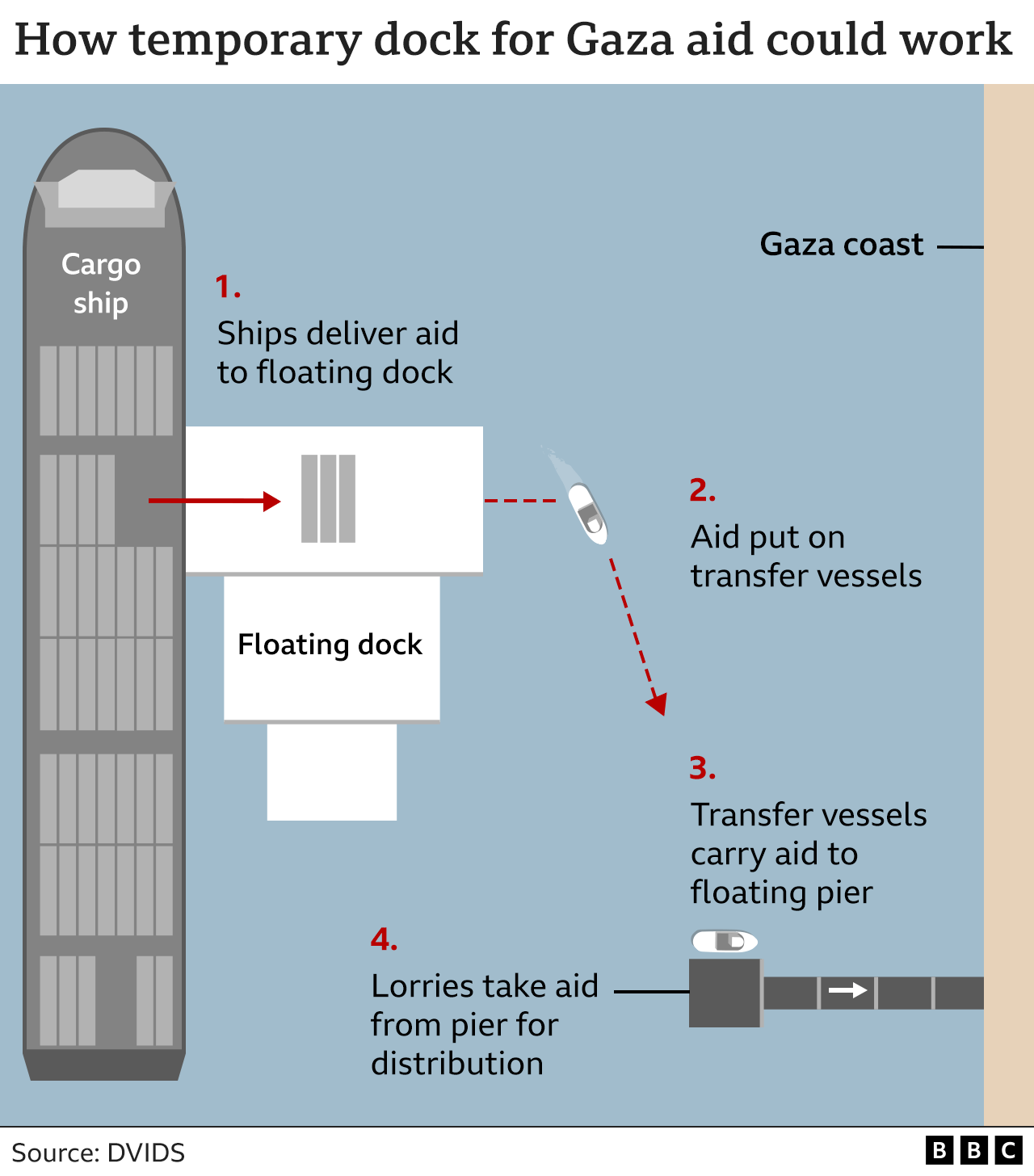
“Di military preference, of course, na to get operating port. Wey make everytin much easier,” Mark Cancian, one retired US Marine Corps colonel wit experience planning amphibious operations, bin tell BBC.
“But dat one no always possible, e fit be sake of one conflict situation or for one peacetime, humanitarian mission,” e add. “Dat na wia JLOTS come in.”
Wetin be Fogbow and which role e go play?
Fogbow leader na Sam Mundy, one former Marine Corps lieutenant colonel wey bin command forces for di Middle East, and Mick Mulroy, one former CIA paramilitary officer and assistant secretary of defence for di Middle East.
Di full details of wetin dem go dey do neva dey public, but one pesin wey sabi di plan bin tell BBC say di Fogbow operation – internally dem sabi am as Blue Beach Plan – primarily na to organise di movement of aid afta e land for Gaza shore.
Di containers go dey empty and di contents go dey for trucks so dem go dey distribution points further into Gaza, as part of one plan approved by US and Israeli goments.
Di BBC hear say Fogbow still dey look for funding and don brief one range of European and Middle East goments on di plans. For longer term, Fogbow get plan to set up one donor-run foundation to help carry aid into Gaza.
How dem go handle security?
Military experts say di plan success depend on security, both from di possibility of hostile fire for one still-active combat zone and from large crowds of civilians wey dey crowd aid shipments.
Retired Rear Admiral Mark Montgomery, one 32-year veteran of di US Navy wit experience to deliver humanitarian aid, tok say di operation need one “security cocoon” to dey established both for di beach and for shallow water nearby.
“You suppose fit see civilians ontop di pier,” Oga Montgomery tok. “Dem fit be parent wey dey desperately look for food for dia children – or dem fit dey try kill somebodi. Dat go shut down operations.”
Two pipo wey dey familiar wit di plan bin tell BBC say di Israel Defense Force (IDF) go run “outer” security to stop crowds of civilians make dem no reach di beach and to make di area safe. Di distribution go be responsibility of local, unarmed Palestinians.
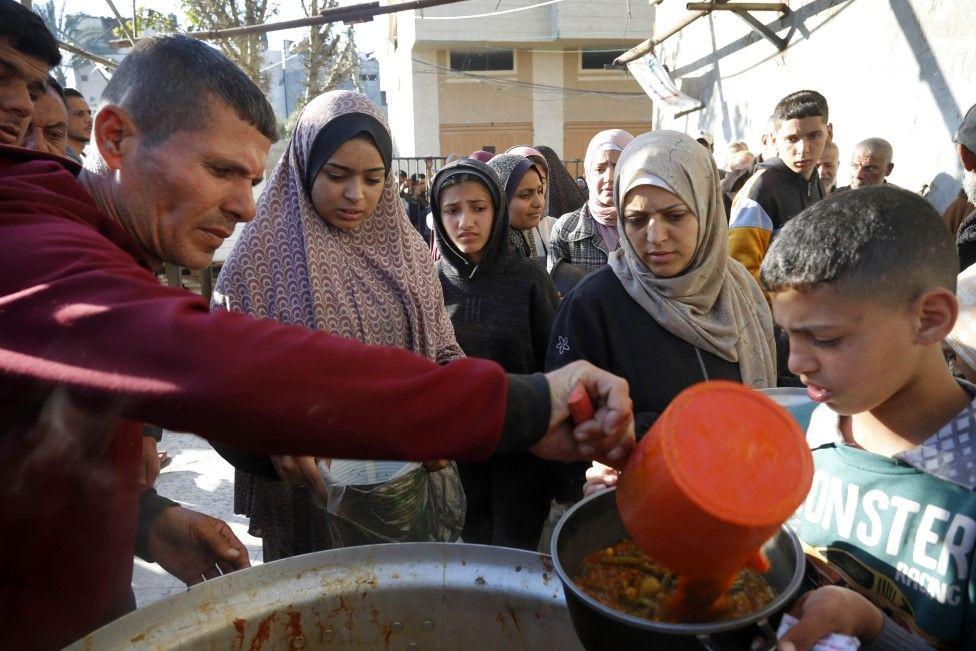
Fogbow dey expected to get only limited logistics roles and no go involve for distribution.
While di Pentagon don tok say no US troops go set foot for Gaza, experts say di reality fit dey more complicated.
“Pipo go need get guidance on di exact angles wey you wan tins to enta, or maybe di right consistency of sand wey need, those kind tins,” Oga Montgomery tok.
“Dem go need to dey dia dey check tins out and make sure say we dey anchor for di exact right spot.”
If dat pesin on di beach no be US service member, e go be one experienced contractor, maybe retired US military, Oga Montgomery bin add.
Which difference di shipments go make?
According to di US defence department, dis temporary pier go mean two million meals for one day fit enter Gaza, much more dan di one wey dey currently possible through di Rafah border crossing wit Egypt or through airdrops.
Earlier dis week, State Department tok-tok pesin Matthew Miller tok say dem dey explore maritime option sake of say oda options no dey enough. But e tok say no substitute for assistance wey dey come wit trucks ova land, so dem go continue to push for dat.
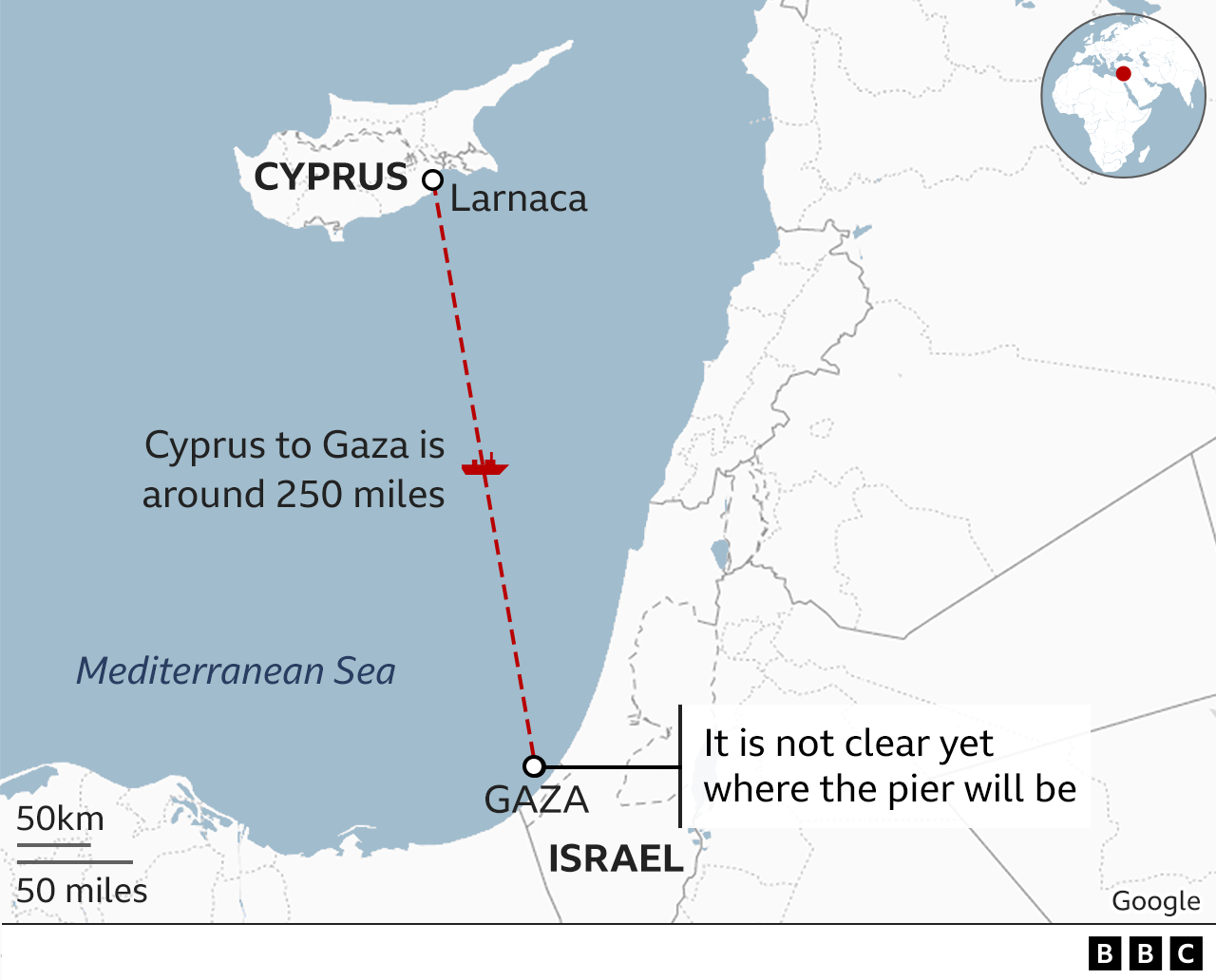
Di quickest and most effective way to get aid into Gaza na by road. But aid agencies tok say Israeli restrictions mean say na one fraction of wetin dem need dey cross.
Humanitarian organisations and US officials don tok say increased shipments ova land remain di only option to meet demand while di pier dey set up.
“Even for best-case scenario, [di pier] no fit dey dia for close to two months as effective delivery mechanism,” Oga Montgomery tok. “We need account for dat as we handle humanitarian challenges ova di next 45 days.”
Di operation fit dey partly function before dem build di pier. Di BBC understand say Fogbow dey look to dredge beach to allow barges get close enough to shore so dat dem fit unload di aid on to trucks.
Odas dey also explore di maritime route to provide aid as na so little dey get in through land. One Spanish ship wey tow one barge load wit 200 tonnes of food supplies don finally set sail from Cyprus.





